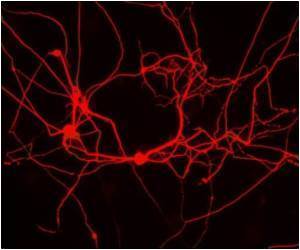Scientists at Duke Medicine have pinpointed specific neurons that appear to regulate perception, while studying the sense of touch.

The findings in fruit fly larvae, which appear in online Oct. 25, 2012, in the journal Current Biology, demonstrate the first known function for the sensory neurons and provide insights that could broaden the understanding of chronic pain syndromes in humans.
"On a molecular level, touch is the most poorly understood of the senses," said W. Daniel Tracey, PhD, associate professor of anesthesiology at Duke University Medical Center and study author. "While there are many types of touch sensor neurons, we still don't know how these neurons respond to force."
Duke researchers studied the larvae of fruit flies to investigate their sense of touch. Like humans and other animals, larvae use touch to learn, explore their environment, sense danger, and more.
To elicit responses to touch, scientists stroked the larvae with the tip of an eyelash, and then measured behavioral responses.
The researchers identified several specialized sensory neurons, specifically the class II and class III multidentritic neurons, to be touch sensors of fruit fly larvae. Genetic silencing of these neurons impaired touch responses, while activation directly triggered responses.
Advertisement
No correlation was found between the length of the filopodia and sensitivity to touch.
Advertisement
"Our discoveries in fruit fly larvae give us really important clues as to where we should look in the genes of mammals to better understand the sense of touch," Tracey continued. "We do not yet know if humans will present similar structures, but further studies may shed light on the sense of touch in our species."
Researchers hope that a better understanding of touch in humans will eventually help clinicians treat patients with sensory or pain issues. Some patients with chronic pain may respond to very light touch or pressure, inappropriately sending strong pain signals to brain.
"By learning more about touch sensing, we can begin to explore why these neurons become so responsive to stimuli, and how it is that these signals become painful. We might – in the long run – help people with chronic pain issues in new ways by looking at the underlying molecular mechanisms," Tracey said.
Source-Eurekalert









